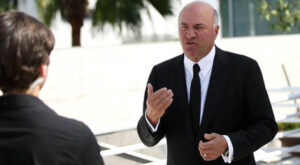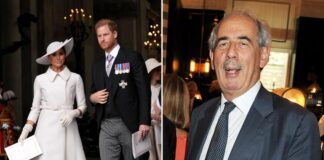OCTOBER 23, 2023

O’Leary says you need to have $5M in the bank. – Phillip Faraone / Getty Images
Everyone has a certain number or dollar amount that they believe would be enough.
For entrepreneur Kevin O’Leary, that number is $5 million. “You have to get to a place where you have $5 million in the bank,” he said in a video posted on YouTube.
With that amount set aside, he argues “you can survive the rest of your life, no matter what happens.”
Here’s the math behind that number and how most millionaires have achieved it.
O’Leary’s magic number
In coming to his figure, O’Leary assumes a 6% to 7% return on $5 million should be enough to support a family regardless of economic conditions. This implies annual passive income of $300,000 to $350,000 — well above the median household income of $74,580.
“When you make that, you set it aside and don’t risk it,” he says. “Then after that you can take risk capital and put it to work.”
Some analysts might say O’Leary’s assumption of 6% to 7% annual return is on the optimistic side. Many savers operate following the “4% rule” in setting expectations for passive income. The rule, which is based on research published in the 1990s by financial adviser Bill Bengen, holds that retirees can safely withdraw 4% from an investment account without depleting it. Bengen has gone back and forth in recent years about whether that number still stands up, but remains a more conservative formula than the one suggested by O’Leary.
Substituting 4% for O’Leary’s “6% to 7%” would yield $200,000 in passive income every year — still a better-than-average living.
So how do you raise that $5 million principal? Here’s O’Leary’s advice.
Wealth building
With a net worth estimated to be over $400 million, Kevin O’Leary certainly has some insight into wealth building. Here are some of his top kernels of advice of how he got where he is now:
Build a business. O’Leary made most of his fortune through business ventures. If you’ve got the skills and entrepreneurial drive too, this is good advice. But keep in mind that with the possibility of massive reward here comes major risk — 20% of U.S. businesses fail in their first year, and that rises to 48% by five years, according to LendingTree analysis of Bureau of Labor Statitstics data.
Focus on cash flow. O’Leary also recommends focusing on cash flow — that is, filling your portfolio with investments that produce actual income (e.g., dividends) as opposed to merely hoping that your holdings’ market value will rise over time. This advice echoes Warren Buffett’s famous quote: “The first rule of an investment is don’t lose (money). And the second rule of an investment is don’t forget the first rule.”
Avoid uncalculated risks. While you’ll want to take risks, you can’t simply leap without a plan. “I like to take risks,” O’Leary once said. “That’s how I make money. But they are calculated risks.” It’s crucial to understand what you’re getting into. If you want an example here, just look at investing legend Warren Buffett. Buffett is one of the most successful investors in U.S. history and he never invests in something he doesn’t understand.
Ask for what you’re worth. O’Leary once said that the wealthiest people are the ones who are most determined to get adequate compensation. That might not make them the easiest to deal with in real life, but he points out that they tend to “get rich because they’re not afraid to ask for what they want.”
Be selective with investments. “I’ve probably heard more than 10,000 pitches,” the SharkTank investor said. “and truth be told, most of them sucked.” His advice about being vigilant and doing due diligence is key. Don’t get swept up in the fear of missing out on the next big thing — as you know, many businesses fail in their early days. Trust your gut and look into every opportunity with the same level of skepticism and interest.
Courtesy: MoneyWise









































































































